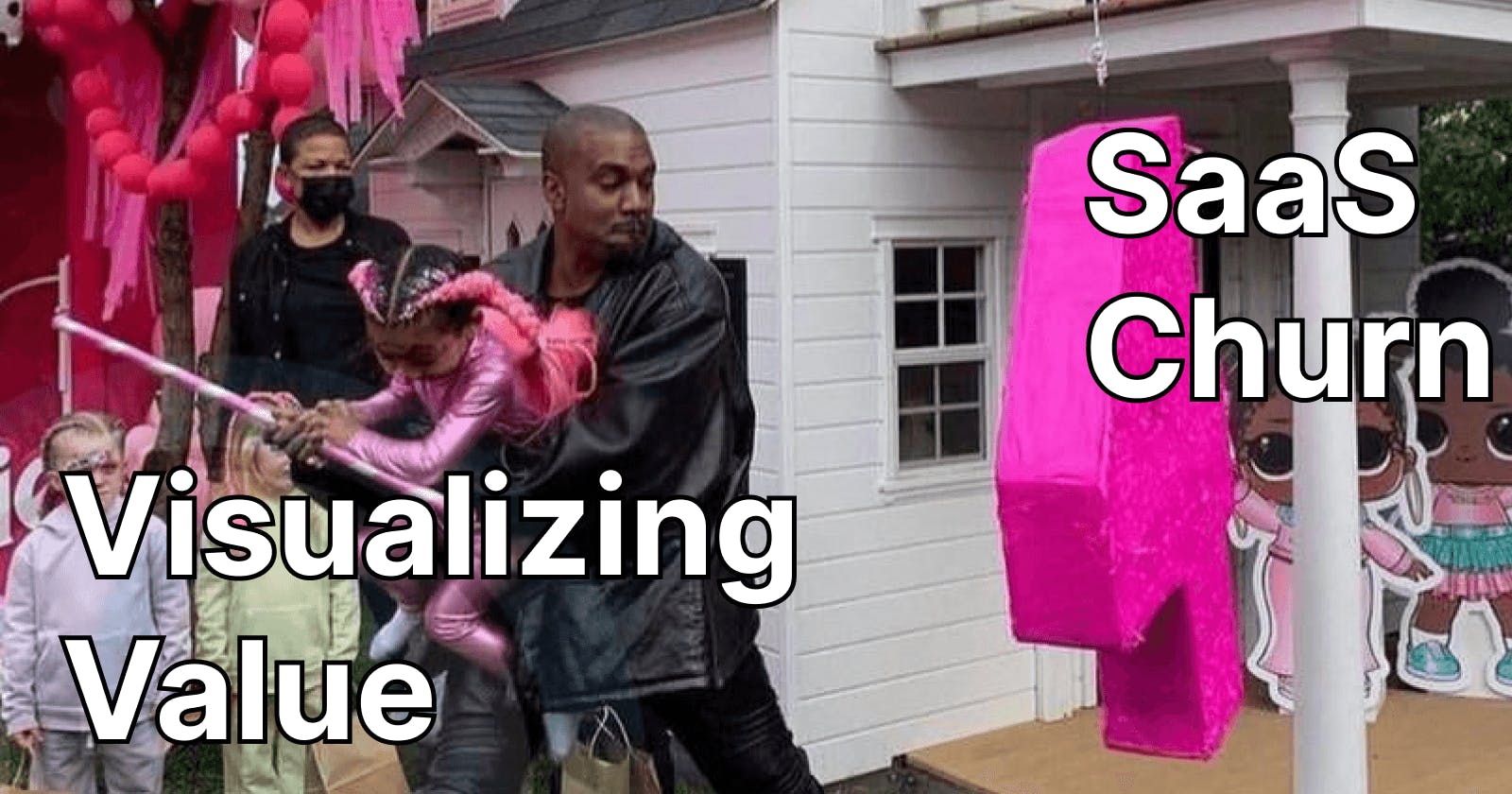Increase SaaS Conversion Rate using the VVF framework
Build a highly efficient SaaS conversion strategy to unlock revenue with practical real-life examples of the Visualize Value First Framework.
It's 2022, every software you use has a monthly subscription. Remember the good old days when Adobe and Microsoft gave you a lifetime deal with Photoshop or Windows XP?
While the subscription model hugely incentivizes companies to main the product better, failing to provide value to the customer can immediately result in the increase of customer churn.
While we have previously discussed marketing strategies to reduce SaaS customer churn, in this post we'll discuss how to increase SaaS conversion rates with real-life easy-to-deploy examples of a value-first strategy.
Note: Conversion rates for SaaS businesses are typically measured with several multiples.
For example,
A marketer would consider how many people signed up from the home page as the conversion rate.
A salesperson would consider the number of people who signed up for the demo from a cold email as the conversion rate.
In this article, we measure conversion as the number of people who keep paying for the software after the free trial and stay loyal to your product.
Before you proceed, imagine you are the customer success manager of an early SaaS startup!
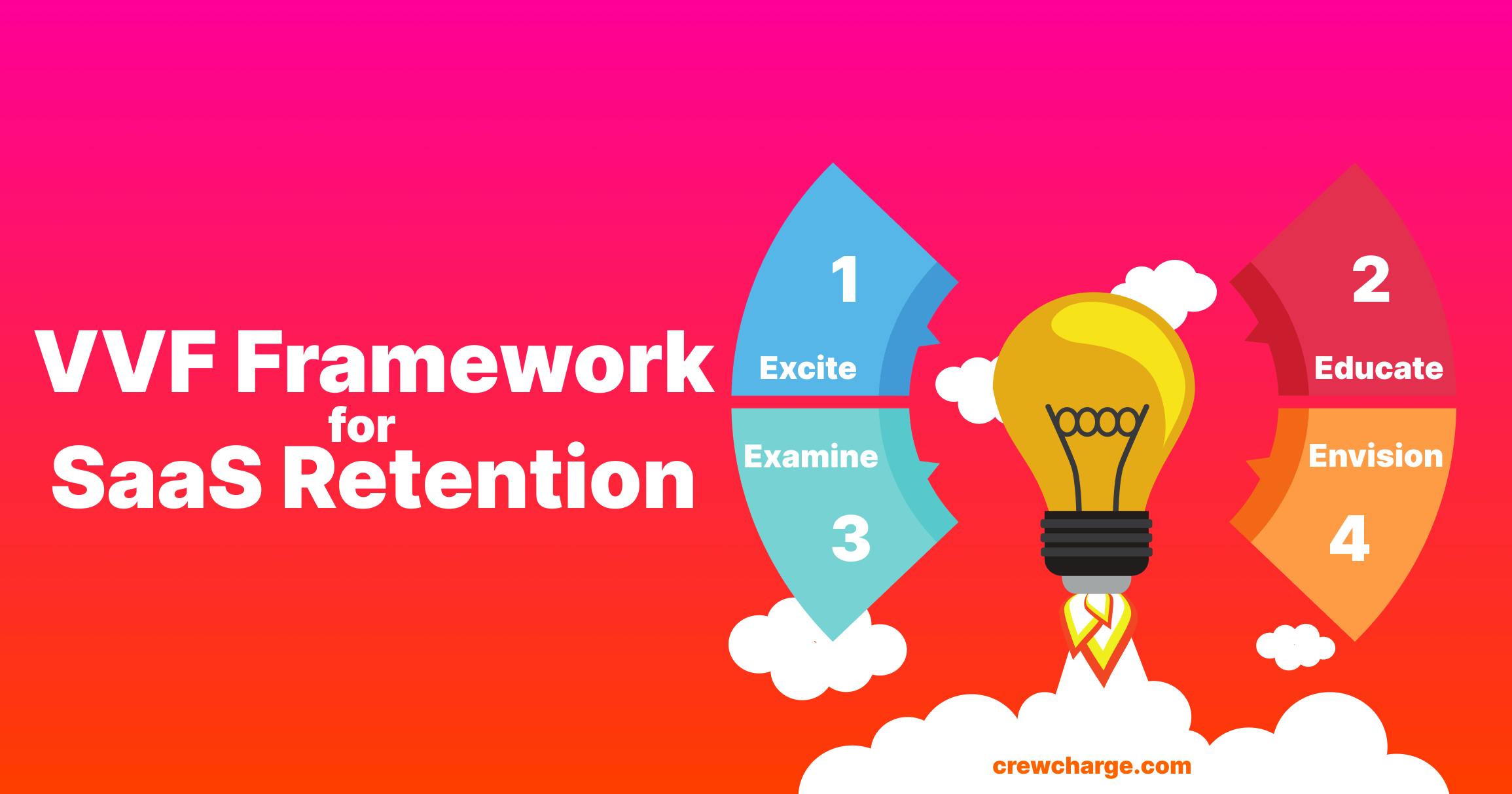
What is the VVF framework for SaaS customer retention?
The VVF framework, abbreviated as the Visualize Value First framework, is a 4-step process to make sure your customer can visualize the value of your SaaS product's impact before it's done.
Simply put, it's a framework that
- Capture what excites the customer about using your product.
- Educate the customer on how your product can help them reach there soon.
- Examine the customer's progress on those needs they mentioned.
- Envision the impact of your product on a timely basis, especially before the free-trial ends.
Let's break the strategy down with a practical example.
Assume you're selling a Microsoft Office 365 subscription that includes Word, Excel, and Powerpoint.
1. Capturing the excitement of the customer
As we've previously discussed, a versatile SaaS product accommodates several features. However, customers signup for one feature they love.
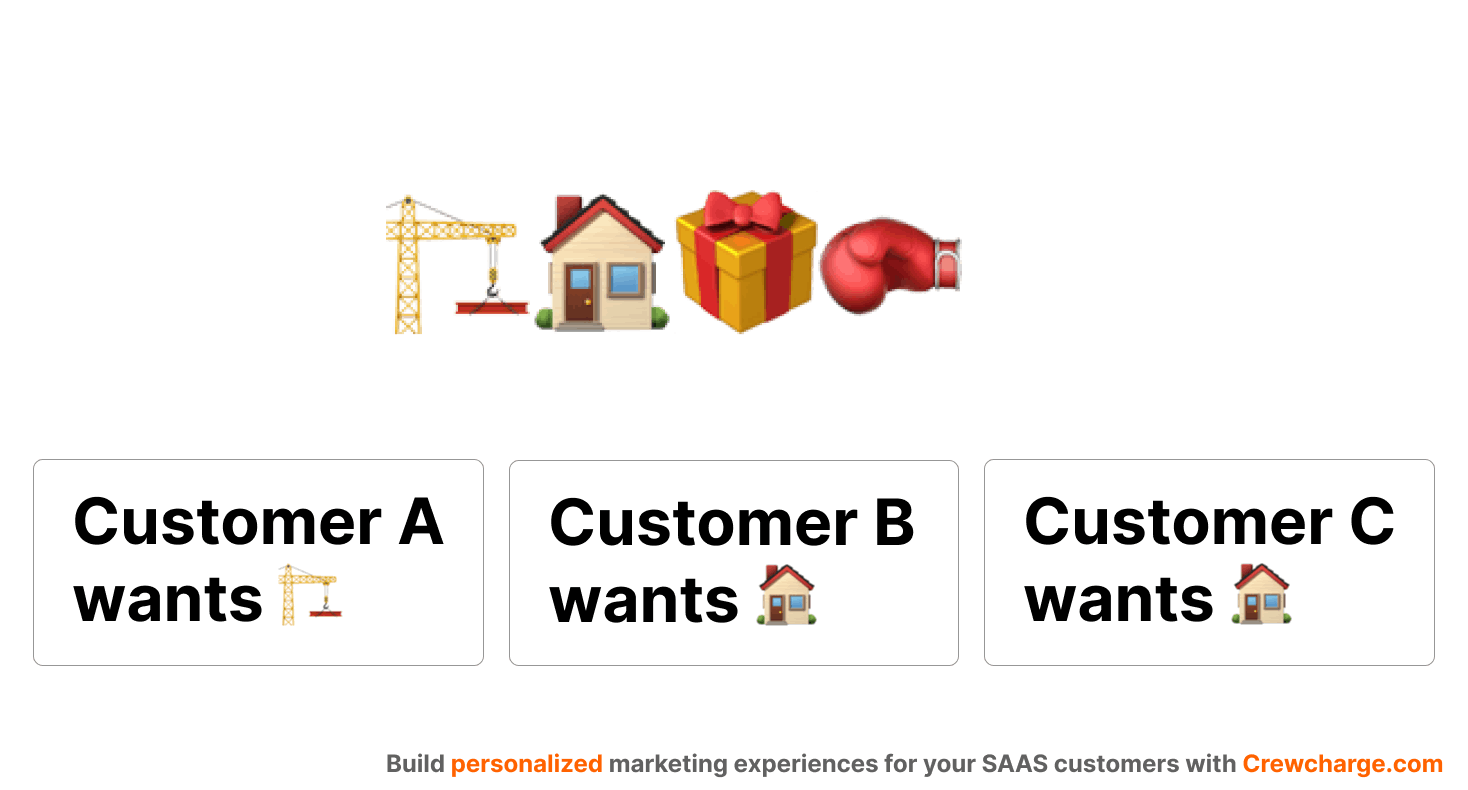
This typically must be done during onboarding. If you do demo calls, let them talk and keep your ears wide open. If you onboard using a form, make use you provide an auto-complete text box to let users freely express themself.
For example,
What are you excited to produce using Microsoft 365? [Let users write and autocomplete with these options]
- Create stunning presentations with PowerPoint
- Crunch awesome numbers with Excel
- Write detailed product specifications in Word.
Note: You must understand what your product offers first and break it down it 4 or 5 features. If you can't it's going to be harder to fix these options.
2. Educate the user on how your product can help them get there.
Here's where you get creative, let's use Crewcharge's workflows for this example.
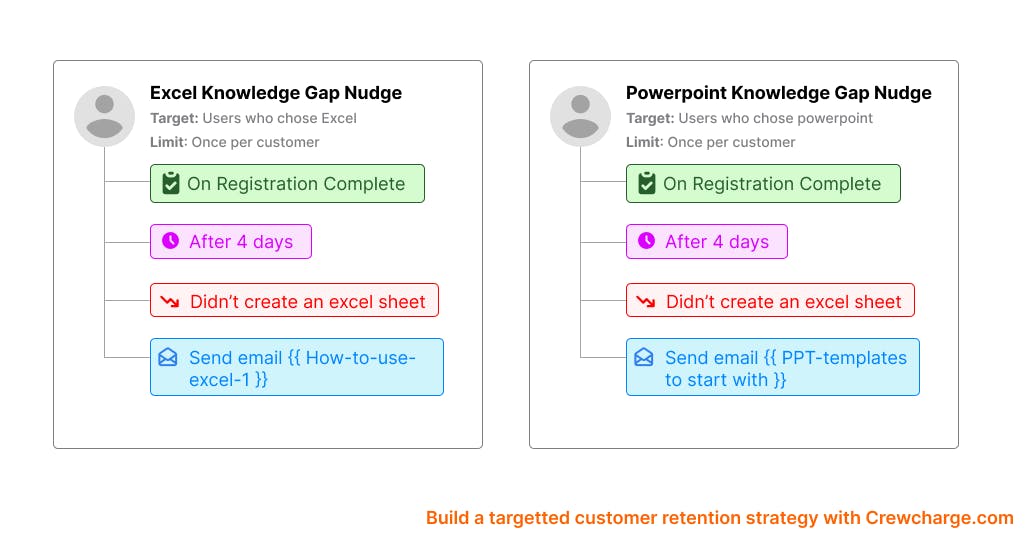
If you can accelerate your customer's ability to produce value through your product, you're likely to succeed.
This is exactly how Figma succeeded, by leveraging the power of templates to help users create pictures soon!
3. Examine the customer's progress on what excited them.
Here's the tricky part, your customers are going to lie to you.
If they're comfortable with using other products, the chances of them switching to your product and spending time and effort are nearly zero, even if they had signed up for your free trial.
If you're in your early stage, you must constantly monitor whether they're progressing there and whether your product is helping them get there.
For example,
- For users who picked that they liked PowerPoint, have they created the next presentation? If not, send out marketing campaigns specific to them.
- For users who chose excel, have they made more calculations? Have they visited the excel sheet again?
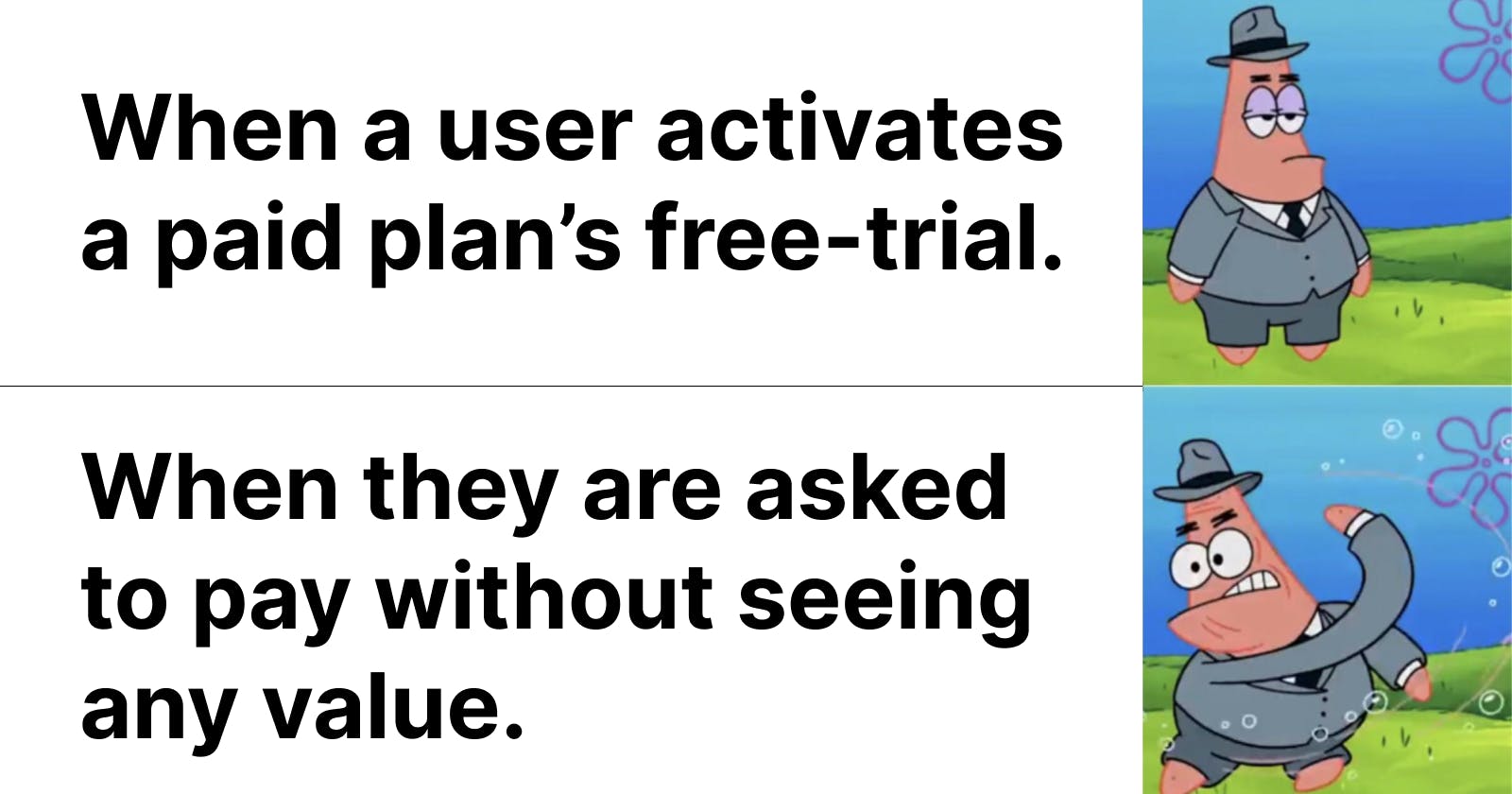
4. Envision the impact on a timely basis, especially before the trial ends.
This is the final stage, the war where all of the processes get super real. If you can take one thing away from this article, it's this.
It's very unlikely that users can get everything they imagined would be possible with your product within 14 days.
All SaaS companies have exactly 14-40 days to prove their worth, unfortunately, even if the tool is great if the user doesn't get the impact they want - they're not going to pay.
If a person had bought PowerPoint, thinking it'd get their pitch funded - is it the fault of Powerpoint that the pitch failed?
Take a look at how Google tackles this,
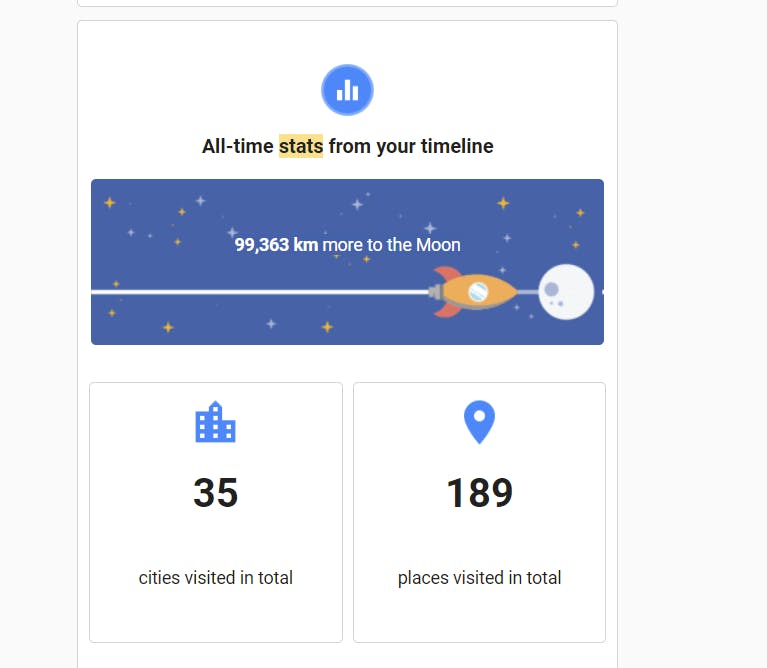
Google sends out weekly/monthly stats on contributions to Google maps, taking a look at how they envision the future. You see, users don't get paid for posting reviews onto Google maps, but the value is envisioned in different ways through mini badges and reviews.
Spotify is known to do this as well, with their famous "Spotify Wrapped" or Facebook's "Year review".
About Crewcharge
Crewcharge is a SaaS customer retention tool with 3 goals,
Provide an eagle's eye view of what your customers are doing in your SaaS at every stage of the customer journey, using cookie-free GDPR-compliant analytics.
Help you build out segmented marketing campaigns to cater to the needs of every customer.
Get, analyze and visualize the mood of your customer with CSAT, NPS, and several other survey widgets.
Book a demo with us here

